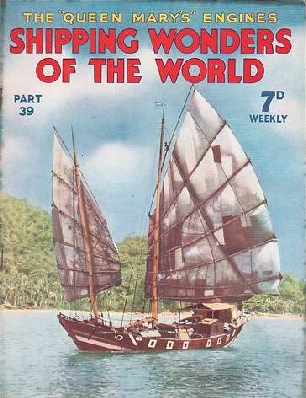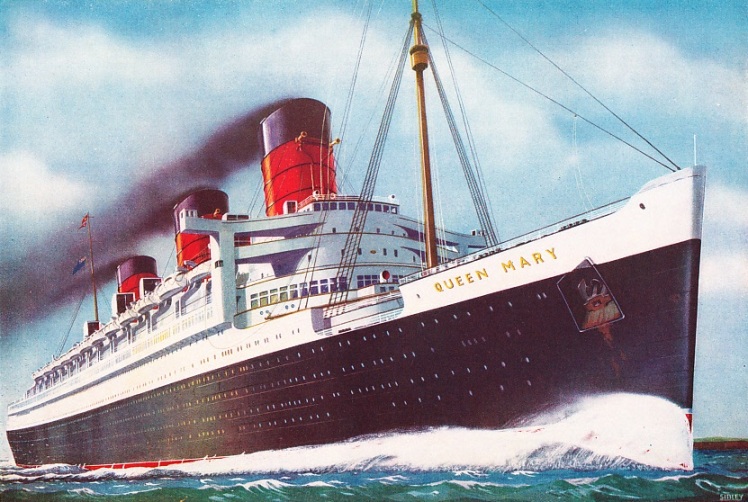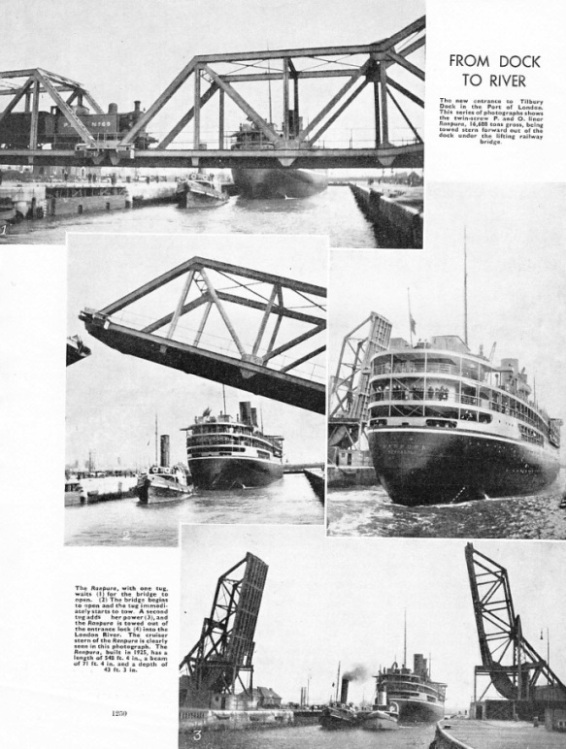
© Shipping Wonders of the World 2012-



Part 39
Part 39 of Shipping Wonders of the World was published on Tuesday 3rd November 1936.
This issue included a colour plate illustrating the RMS Queen Mary. It formed part of the article on The Queen Mary’s Engines.
The Cover
This week’s cover shows a typical Chinese junk sailing past the island of Pangkor, Dindings, Straits Settlements. Some of these junks are used for carrying petrol on a coastal service, and contrast strangely with the oil-tankers of the western world.

Contents of Part 39
Norway to New Zealand in a Cutter
The story of Erling Tambs, who sailed a 40-feet cutter, the Teddy, from Norway to New Zealand. This chapter is concluded from part 38.
It is the eighth article in the series Great Voyages in Little Ships.
Japanese Bulk Cargo Carrier
A description of the Hyogo Maru, one of the strangest in appearance, for her high ‘midship superstructure is streamlined not only at the forward end but also at the after end. She is easily in the front rank of unorthodox motor ships. Her sister ship is named the Osaka Maru.
This is the twenty-ninth article in the series on Merchant Ship Types.
The Queen Mary’s Engines
In a ship the size of the Queen Mary the propelling machinery and auxiliary plant attain enormous dimensions, yet so well has she been designed that her space and power are used to the fullest advantage. She owed virtually everything to her engines on her record transatlantic crossings. The article is accompanied by a superb colour plate of the Queen Mary.
The Queen Mary (colour plate)
THE MIGHTY ATLANTIC RECORD BREAKER. Within little more than three months of her maiden voyage in May 1936, the Queen Mary had broken six Atlantic speed records, and had won the Blue Riband. On August 19, 1936, she left Southampton for New York and covered the distance from Bishop Rock to the Ambrose Light, 2,907 miles, in 4 days 27 minutes, at an average speed of 30.14 knots. She left New York on August 26 and covered the eastbound distance from the Ambrose Light to Bishop Rock, 2,939 miles, in 3 days 23 hours 57 minutes, at an average speed of 30.63 knots. Her speed records include the fastest day’s run eastbound and westbound, the fastest crossing in either direction and the fastest port-to-port times between Cherbourg and Southampton and vice versa.
From Dock to River
A photo-feature on the new entrance to Tilbury Dock in the Port of London. This series of photographs shows the twin-screw P and O liner Ranpura, 16,688 tons gross, being towed stern forward out of the dock under the lifting railway bridge.
The Ranpura, with one tug, waits (top) for the bridge to open; (middle left) the bridge begins to open and the tug immediately starts to tow; a second tug adds to her power (bottom); and the Ranpura is towed out of the entrance lock (middle right) into the London River. The cruiser stern of the Ranpura is clearly seen in this photograph. The Ranpura, built in 1925, has a length of 548 ft 4 in, a beam of 71 ft 4 in, and a depth of 43 ft 3 in.

